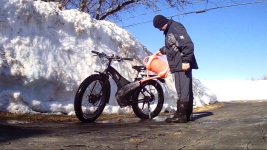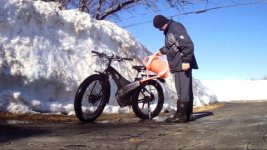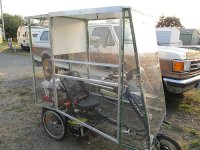Go to any automotive parts store, and in the electrical section you can find various tube sizes of "dielectric grease". This does NOT conduct electricity, which can be proven very easily and cheaply by sticking DMM orobes in it. I say that because in researching it, I found various youtubes, some which proved it does not conduct, and some that repeated a misconception about dielectric grease by saying it improves conduction of electricity.
Car engines sometimes get water splashed on them when driving in the rain. Also, oxygen and humidity in the air work together to create corrosion on electrical connectors, especially on anything near salt-water (boats often use components similar or identical to cars).
Because of these things, something needed to be developed that could protect the metal prongs and sockets from corrosion (which creates high resistance) and also mild splashes of water. The "old skool" poor-boy method was to spread Vaseline /
generic petroleum jelly all over the prongs and sockets. 99.99% of the time, it does not conduct any electricity, but who knows? since it isn't formulated to be insulative and non conductive, one batch can vary from the next. If the label says that the grease inside is dielectric, it is specifically formulated to be an insulator.
Boat guys who do electrical work insisted that smearing dielectric grease onto electrical connections is absolutely vital, so some car guys misunderstood and thought it improved conduction. It prevents corrosion due to exposure to oxygen and humidity in the air, and it helps prevent shorts during mild splashing.
The next product you need is either clear nail polish from the dollar store, or a $6 can of "liquid tape". I just bought some from a large big box hardware store, found in the electrician supply section. It can be found in black/red/green/and several other colors.
Nail polish is made from nitro-cellulose, the same plastic that is used to make billiard balls and piano keys. It is dissolved in acetone, which evaporates. Although it can be found in many colors, some pigments do not conduct electricity, and others do (even if its just a trickle drain). Its the sparklies in the fancy nail polish that I suspect are the worst, but I'll never know because I only use clear nail polish on electrical stuff. If you have some free red nail polish handy and you want to mark something (as +positive), use clear nail polish first to seal it, then a dab of red.
There are many useful youtubes on waterproofing RC models like boats. Don't put water-proofing goo on heat sinks, or over LEDs.
The pic below is Justins BAC controller, which has been fully potted inside clear resin. You could literally dunk this in a bowl of water and it will work just fine. I will be buying one. Other controllers need airfins, and to be mounted outside in the air-flow...this one has a thick aluminum baseplate that is a heat-sink, and attaches to a frame member. With most bike frames being aluminum, the frame becomes the thermal mass that sheds heat (and can be splashed with water), but...the most important design choice was to use the most efficient components (instead of the cheapest) so excess waste-heat is not produced in the first place.






